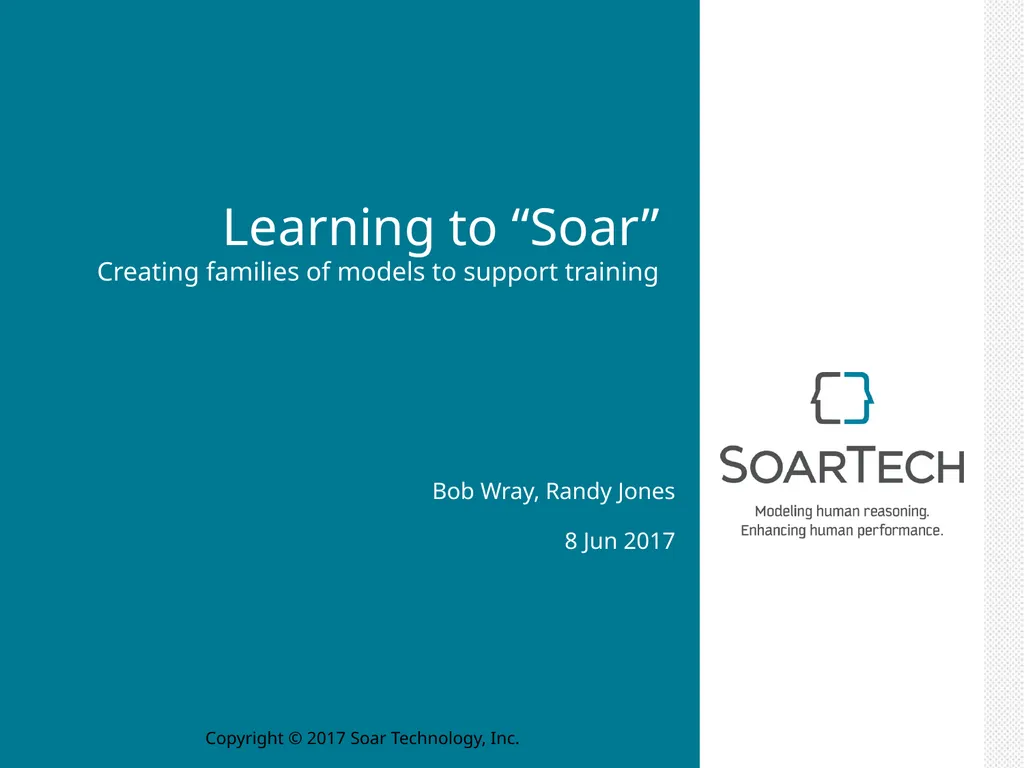
Author : luanne-stotts | Published Date : 2025-05-19
Description: Bob Wray, Randy Jones 8 Jun 2017 Copyright 2017 Soar Technology, Inc. Learning to Soar Creating families of models to support training Questions What are good (fast, cheap, reliablerobust) methods of developinglearning low-levelDownload Presentation The PPT/PDF document "" is the property of its rightful owner. Permission is granted to download and print the materials on this website for personal, non-commercial use only, and to display it on your personal computer provided you do not modify the materials and that you retain all copyright notices contained in the materials. By downloading content from our website, you accept the terms of this agreement.
Here is the link to download the presentation.
"Bob Wray, Randy Jones 8 Jun 2017 Copyright © 2017"The content belongs to its owner. You may download and print it for personal use, without modification, and keep all copyright notices. By downloading, you agree to these terms.













